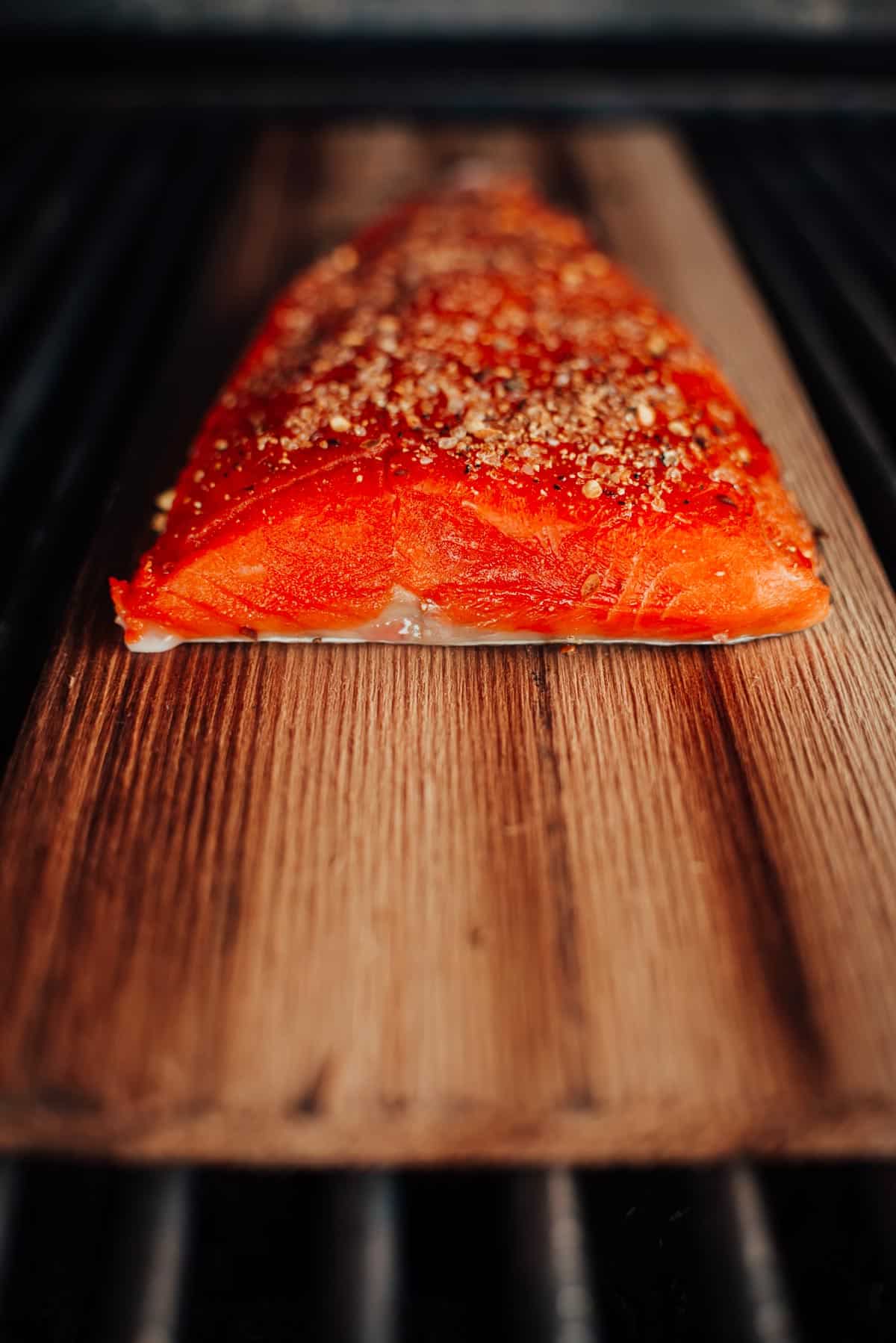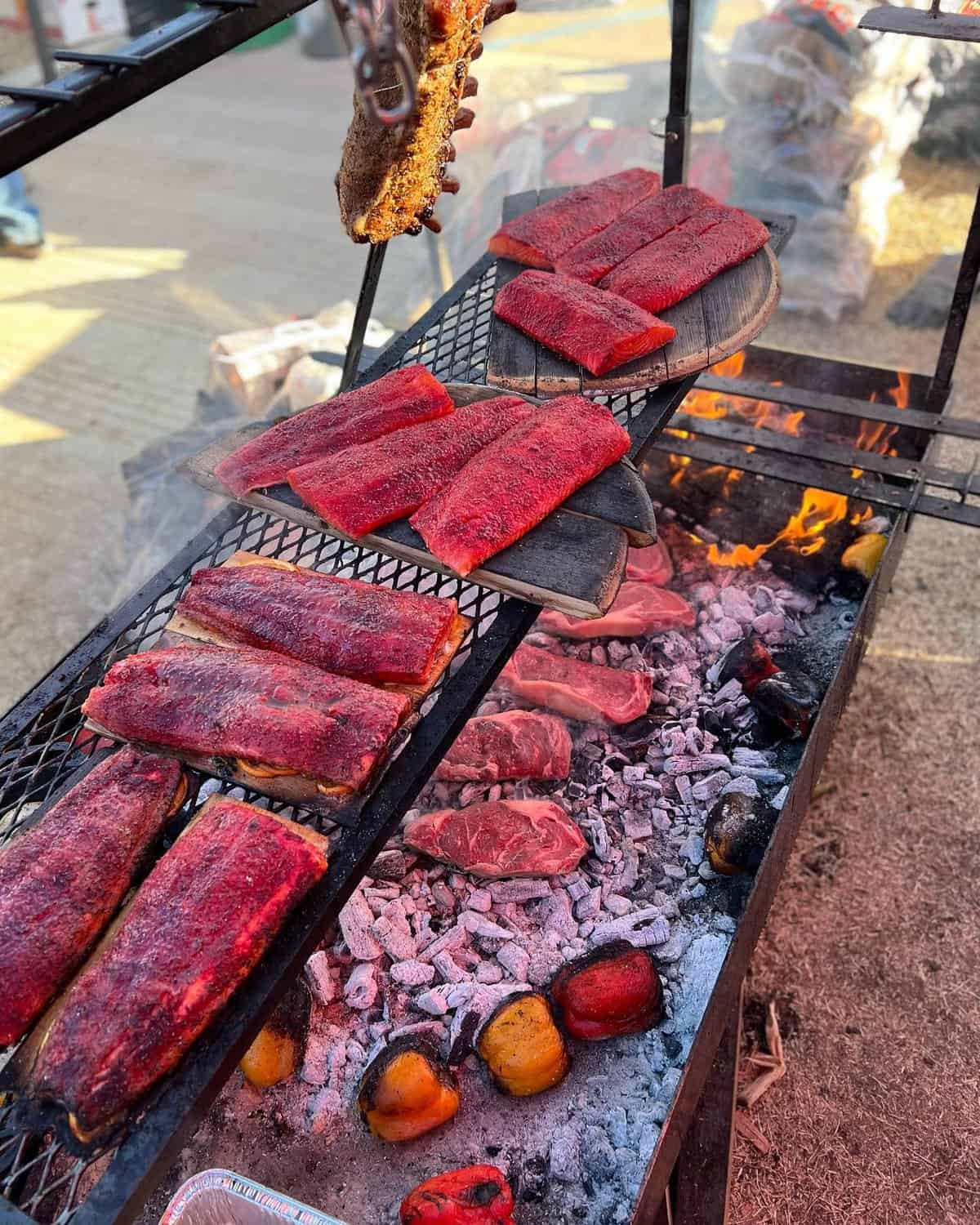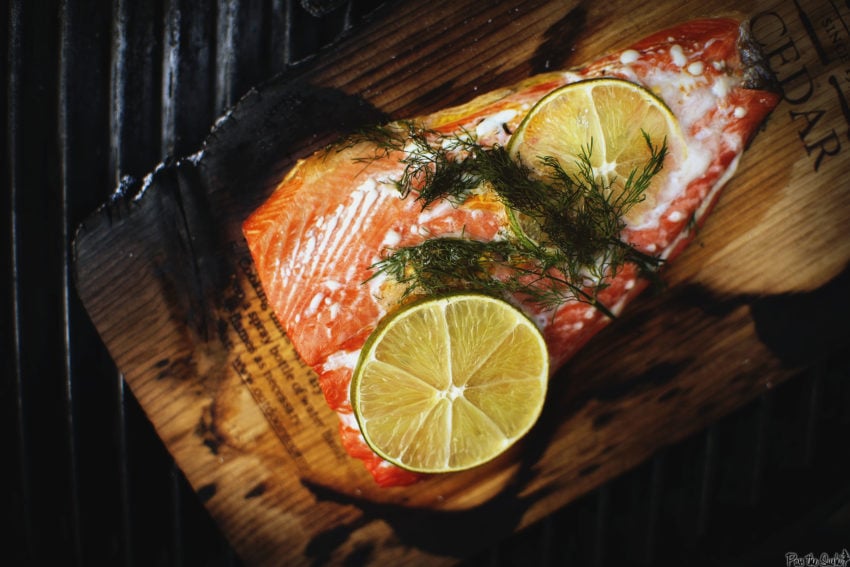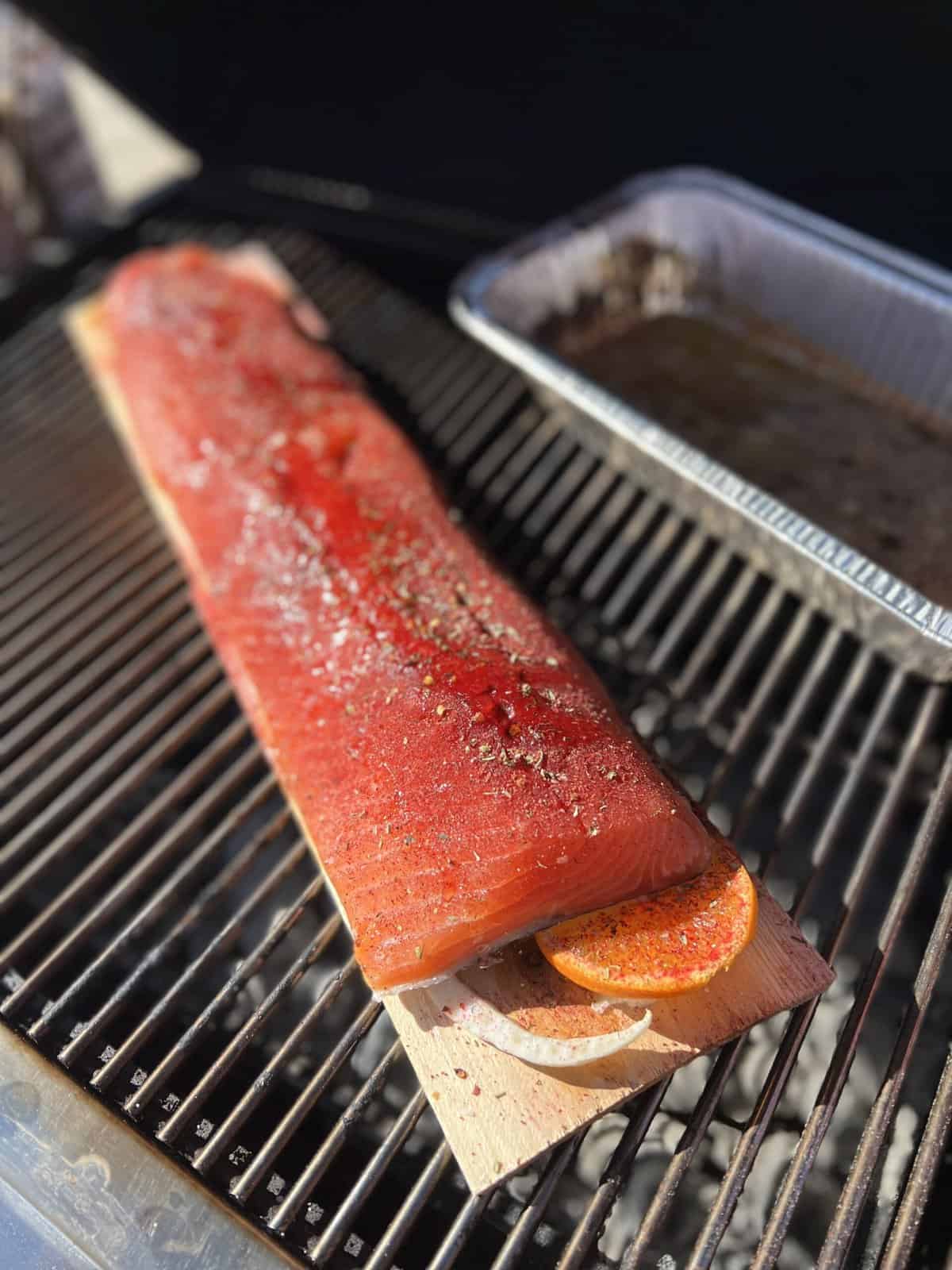Ready to elevate your smoked salmon game from good to unforgettable? The secret’s in the smoking wood, and we’re about to unlock it for you.

Forget one-size-fits-all approaches. Salmon’s delicate flavor demands the perfect wood pairing, and we’ve done the legwork to bring you the ultimate guide. We’ll steer you towards woods that complement, not overpower, your prized catch so you can learn how to pick the perfect match for your favorite seafood recipes.
Grilled salmon is delicious, but smoked salmon takes things to another level…. Smoking takes longer than grilling, but trust us, it’s worth it. The longer time allows the smoke to infuse the salmon with a unique flavor profile that you just can’t get with grilling alone.
Now, here’s the deal with smoking. The right type of wood can affect the flavor of the fish. Not all smoking woods are created equal. In fact, many woods aren’t great for salmon. That’s why it’s essential to know which woods work and which don’t so you can get it right the first time.
Top 5 Most Popular Woods for Smoked Salmon
Alder Wood
Alder wood is a popular choice amongst pro-smokers for smoking salmon. It boasts a cool, slow burn that releases a light, buttery smoke. This delicate smoke adds a hint of sweetness, perfect for highlighting the delicate flavor of salmon. We love alder wood and cedar wood when using planks for smoking salmon.
Apple Wood
A crowd-pleasing choice, apple wood offers a subtle sweetness without overpowering the salmon’s natural taste. This cooler-burning wood is ideal for those who want a hint of smokiness without adding significant heat.
Maple Wood
Sitting between alder wood and oak in terms of smoke intensity, maple wood offers a touch of sweetness and earthiness. This option is perfect for those who desire a bit more smoke than alder wood provides but still want to avoid overpowering the salmon’s delicate nature. It’s like infusing your salmon with the sweet and smoky essence of candied bacon.
Pecan Wood
While slightly hotter burning than oak or maple, pecan wood offers a medium-high heat range. This translates to a more noticeable impact on cooking time, so keep an eye on your salmon to avoid overcooking. Pecanwood imparts a smoky flavor with a hint of nuttiness, making it a great choice for salmon that can handle a slightly higher temperature cook.
Peach Wood
Another excellent choice for salmon is peach wood. Similar to alder wood and apple wood, it falls into the cool-burning category. This means it won’t significantly impact the cooking time of your salmon. Peach wood imparts a subtle sweet flavor with a touch of floral character, gently enhancing the salmon’s natural flavor without overpowering it. This makes it ideal for those who want to add a touch of smoky sweetness without compromising the delicate taste of the fish.
Pro tip: While we don’t recommend cedar wood chips for smoking salmon, you can totally use a cedar plank, like we do in our cedar plank salmon recipe. The cedar plank infuses a light, smoky flavor to the salmon. This is the perfect recipe to use if you don’t have a smoker but still want that delicious smoke flavor.

Understanding Smoking Wood
What is smoking wood?
Smoking wood is specially prepared for cooking, designed to produce flavorful smoke rather than just heat. It comes in various forms:
- Chips: Ideal for shorter smoking times, perfect for fish
- Chunks: Better for longer smoking sessions
- Pellets: Used in pellet smokers and grills
Wood Choice Impacts:
- Flavor: Each wood type imparts a unique taste
- Cooking Process: Affects burn rate and temperature
Key Points for Smoking Salmon:
- Use wood chips for shorter, controlled smoking
- Choose lighter woods (e.g., alder, apple) to complement salmon’s delicate flavor
- Avoid strong woods like mesquite, which can overpower the fish
For fish, we prefer smoking with wood chips because they’re ideally sized for shorter smoking times compared to larger cuts of meat like brisket or pork butt.

Tips and Techniques for Smoking Fish with Wood
- Skip Soaking the Wood Chips but Never Skip Soaking the Planks: You want clean smoke for salmon. Soaking chips creates steam, not smoke. Use dry wood chips for optimal results. Also, steer clear of green wood, as it will burn too hot and can release harmful chemicals into your salmon, producing an unpleasant taste. Always soak planks if using, as you want to prevent burning to protect the fish from the flame.
- Start Low, Add Slow: When it comes to wood chips, a handful is a good starting point. Different woods have varying smoke intensity. You can always add more chips later if needed, but remember, smoke can’t be removed, so err on the side of caution.
- Embrace Smoky Blends: Experiment with wood blends to create unique flavor profiles for your salmon. For example, try a mix of apple wood and pecan for a touch of fruity sweetness with a hint of nuttiness. Hickory, while too strong on its own for salmon, can be fantastic when blended with milder woods like maple for a sweet and smoky balance.
- Temperature is King: Consistent heat is crucial for perfect smoked salmon. Aim for a smoker temperature between 225°F and 275°F (107°C and 135°C). This allows the wood smoke to gently infuse your salmon while ensuring even cooking. Invest in a good meat thermometer to monitor the smoker’s internal temperature if it doesn’t have a built-in gauge.
- Charcoal chimney: If you decide to use a charcoal grill, you might want to try using a charcoal chimney as well. It helps the charcoal heat up quicker, so you can get to smoking faster.

What’s the difference between hot-smoking salmon and cold-smoking salmon?
The key difference between hot-smoking salmon and cold-smoking salmon lies in the temperature at which the fish is cooked and smoked. Both methods utilize wood smoke to infuse the salmon with flavor, but the final product and ideal uses differ significantly.
- Hot Smoking: This method involves cooking the salmon to a finished internal temperature, typically between 145°F and 180°F (63°C and 82°C). The smoker temperature itself can range from 120°F to 225°F (49°C to 107°C). Hot smoking essentially combines smoking with cooking, resulting in a cooked salmon with a smoky flavor. The texture is similar to poached or baked salmon – flaky and moist. Hot-smoked salmon is typically enjoyed immediately and doesn’t require further cooking.
- Cold Smoking: Here, the salmon is exposed to wood smoke at much lower temperatures, usually below 90°F (32°C). The goal isn’t to cook the fish entirely but rather to preserve it and infuse it with a subtle smoky flavor. The smoking time can vary from several hours to a day or even longer. Cold-smoked salmon remains uncooked and has a silky texture similar to raw salmon. It’s typically served as an appetizer or used in salads, where the smoky notes complement other ingredients. It requires careful handling and storage due to its uncooked nature.


Other Factors to Enhance Smoked Fish Flavor
Brining:
A dry brine is a fantastic choice before smoking salmon on the grill because it seasons the fish deeply without adding excess moisture. This allows the salmon to absorb smoke more effectively, resulting in a deeper smoky flavor and a beautiful, crisp texture on the finished product.
Marinades:
Marinades and rubs aren’t just for grilling! They can be powerful tools for prepping salmon before smoking. Marinades, with their liquid base, offer a deeper layer of flavor infusion. They can penetrate the salmon’s flesh, adding a touch of sweetness, a burst of citrus, or even a savory kick, depending on the ingredients you choose. This complements the smoky notes beautifully without overpowering the delicate salmon taste.
Rubs:
Rubs, on the other hand, offer a more concentrated layer of flavor applied directly to the fish’s surface. Herbs, spices, and sugars in the rub create a beautiful crust during the smoking process, adding texture and an extra dimension of taste.
Both marinades and rubs can also help enhance the salmon’s natural moisture content, giving you a juicier and more flavorful finished recipe.
What to pair with smoked Salmon?
Smoked salmon is super versatile. We love serving it whole (or as fillets) and pairing it with other smoky sides like smoked potato salad or grilled corn in the husks or keep it lighter with roasted butternut squash or air fryer sweet potato fries. If you feel like being indulgent, whip up some brussels sprouts au gratin or Dutch oven mac and cheese.
It’s also great used in recipes like smoked salmon dip or even on top of smoked cream cheese.
Don’t forget the sauces! The smokiness from the salmon pairs really well with the brightness of lemon aioli or a tangy horseradish cream sauce. The key to perfect pairings is to find flavors that won’t overpower the salmon but rather work with it.
There isn’t a single champion when it comes to the best wood for smoking salmon – it really depends on the flavor profile you’re after and how you’re planning to cook it! If you’re a new to smoking, start with milder woods like alder or apple wood to gently complement the salmon’s natural taste. Feeling adventurous? Experiment with maple for a touch of earthiness or pecan for a hint of nuttiness. Remember, smoking is all about having fun and exploring different flavor combinations.










